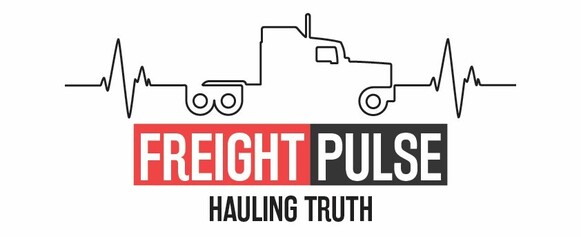The retail market for new trucks is facing an uncertain trajectory for the remainder of 2025, as industry experts cite persistent challenges ranging from fluctuating demand to regulatory headwinds. Despite some cautious optimism among fleets, truck manufacturers and carriers alike are navigating an increasingly unpredictable environment.
Uncertainty in Demand Clouds OEM Outlook
The timing of a rebound in demand remains elusive, with executives voicing concerns over shifting market dynamics. Mathias Carlbaum, CEO of International Motors, underscored the uncertainty during a media roundtable held April 29.
“How do you polish this crystal ball?” Carlbaum asked rhetorically, emphasizing the lack of visibility. He acknowledged that International has begun seeing order cancellations something the company has not experienced in nearly half a decade. “We are close to the bottom. The question is how long the bottom lasts. There will be zero pre-buy,” he stated, referring to the absence of early purchases that typically precede regulatory changes.
Truck manufacturers are also grappling with a complex regulatory environment. Ongoing trade tensions and stricter emissions regulations have compounded uncertainty. Volvo Group, parent of Volvo Trucks North America and Mack Trucks, noted that U.S. customers have largely adopted a “wait-and-see” stance as they assess the implications of both new emissions standards and the potential for increased tariffs.
Second-Half Rebound Hopes Temper Industry Anxiety
Some manufacturers, however, maintain a cautiously positive outlook. Paccar, which owns Kenworth and Peterbilt, is anticipating a stronger second half of the year. CEO Preston Feight shared this perspective during the company’s Q1 earnings call on April 23, saying, “We anticipate increased customer demand as policy and emissions regulations become more stable.”
This expectation hinges partly on the resolution of policy uncertainty. The Biden administration’s tightening of federal greenhouse gas (GHG) standards for heavy-duty vehicles has prompted fleets to pause or reassess purchasing strategies. The Environmental Protection Agency’s (EPA) Phase 3 emissions rule targeting reductions through 2032 is pushing OEMs to invest in low- and zero-emission technology, but also adding short-term friction to fleet planning.
Used Truck Market Surges Amid New Equipment Hesitation
While many buyers remain sidelined in the new truck market, the used vehicle segment is experiencing a notable uptick. According to Chris Visser, director of specialty vehicles at J.D. Power, model year 2023 sleeper tractors averaged $96,735 at auction in April up more than $16,000 from March, representing a 20.5% increase.
“If you were bidding for sleeper tractors at auctions in April, you probably noticed fewer trucks available,” Visser wrote on LinkedIn. “And if you were looking for trucks with low mileage, so was everyone else.”
This surge reflects a broader trend: fleets are offloading aging, costlier-to-maintain trucks in favor of newer used models, particularly as concerns about tariffs and emissions costs continue to loom. The specter of pre-tariff buying has also encouraged some to act quickly before potential cost increases set in.
Tariff Tensions and Supply Chain Implications
The recent launch of a Section 232 investigation into truck production and supply chain vulnerabilities by the Trump administration has added another layer of complexity. According to Rob Wertheimer, founding partner at Melius Research, this investigation could lead to tariff adjustments that might favor manufacturers like Paccar, which relies less on Mexican-based production compared to competitors such as Daimler, Traton, and Volvo, all of whom have significant manufacturing operations in Mexico.
Still, Wertheimer cautioned that any broader economic downturn resulting from tariffs or geopolitical friction could derail demand entirely. “Tariffs are clouding most everything else this year,” he wrote in an April 29 note, predicting price hikes from Kenworth and Peterbilt in Q2.
Fleets Remain Guardedly Optimistic
Despite the many headwinds, sentiment among fleets particularly owner-operators and small carriers has remained more upbeat than expected. According to a recent Bloomberg-Truckstop survey, 65% of respondents acknowledged the potential negative impact of tariffs, yet 62% still anticipate sustained demand, and 55% expect rate increases over the near term.
“Carriers aren’t turning a blind eye to the potential volatility that could arise from tariffs,” said Lee Klaskow, senior freight transportation and logistics analyst at Bloomberg Intelligence. “However, most carriers believe rates and volumes still have some room to grow, and many believe that the worst of the challenging freight conditions may be over.”
Broader Market Forces at Play
In addition to tariffs and emissions rules, macroeconomic conditions such as interest rates, fuel prices, and consumer demand for goods continue to influence the trucking industry. With inflation still a factor and economic growth projections mixed, truck makers and carriers alike are bracing for a volatile ride through the rest of 2025.
The electric and alternative-fuel truck segments are also developing quickly, driven by both regulatory pressure and customer interest in sustainability. However, infrastructure and high upfront costs remain barriers to widespread adoption.
The U.S. truck retail market is entering a pivotal period. With regulatory clarity still pending and macroeconomic pressures building, both manufacturers and carriers are walking a tightrope. While some anticipate a rebound in late 2025, the path forward will likely depend on a complex mix of policy decisions, fleet needs, and economic stability. For now, many are turning to the used market as a practical stopgap while waiting for the fog to lift.

